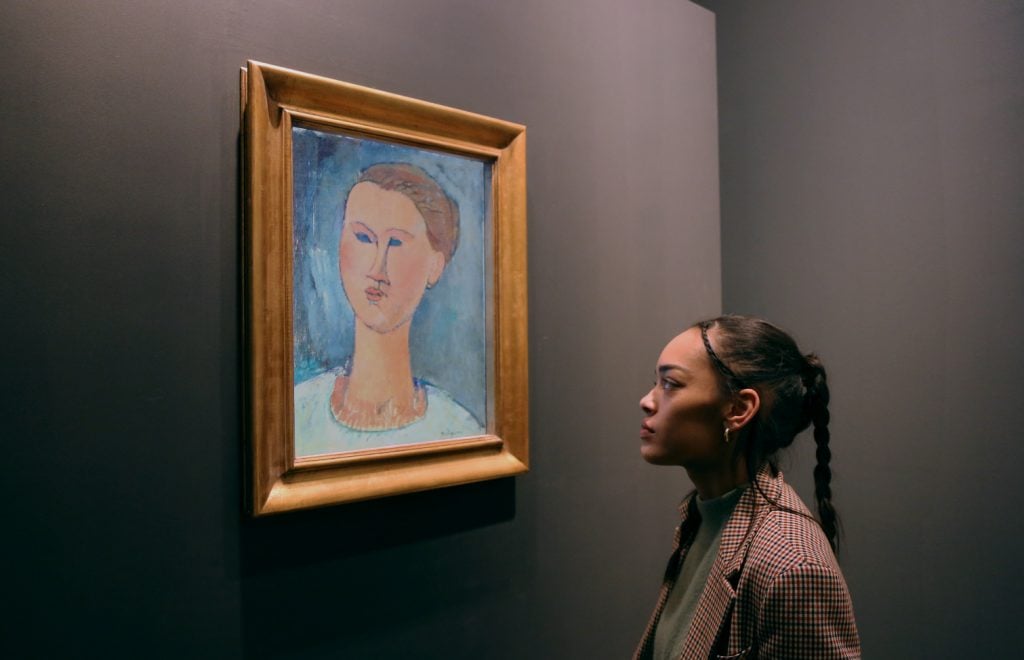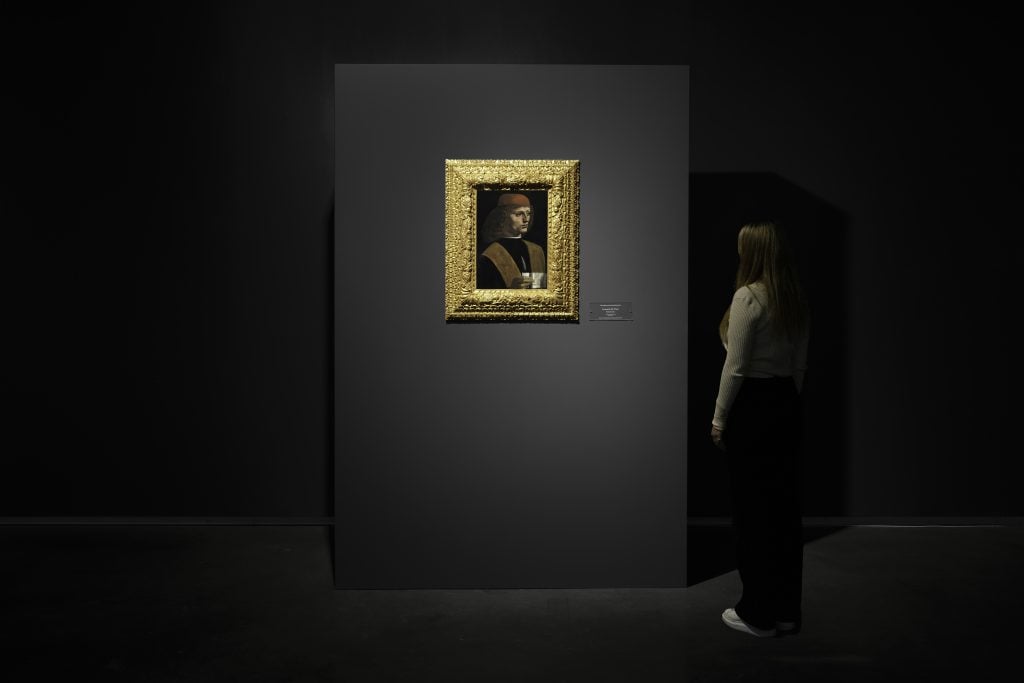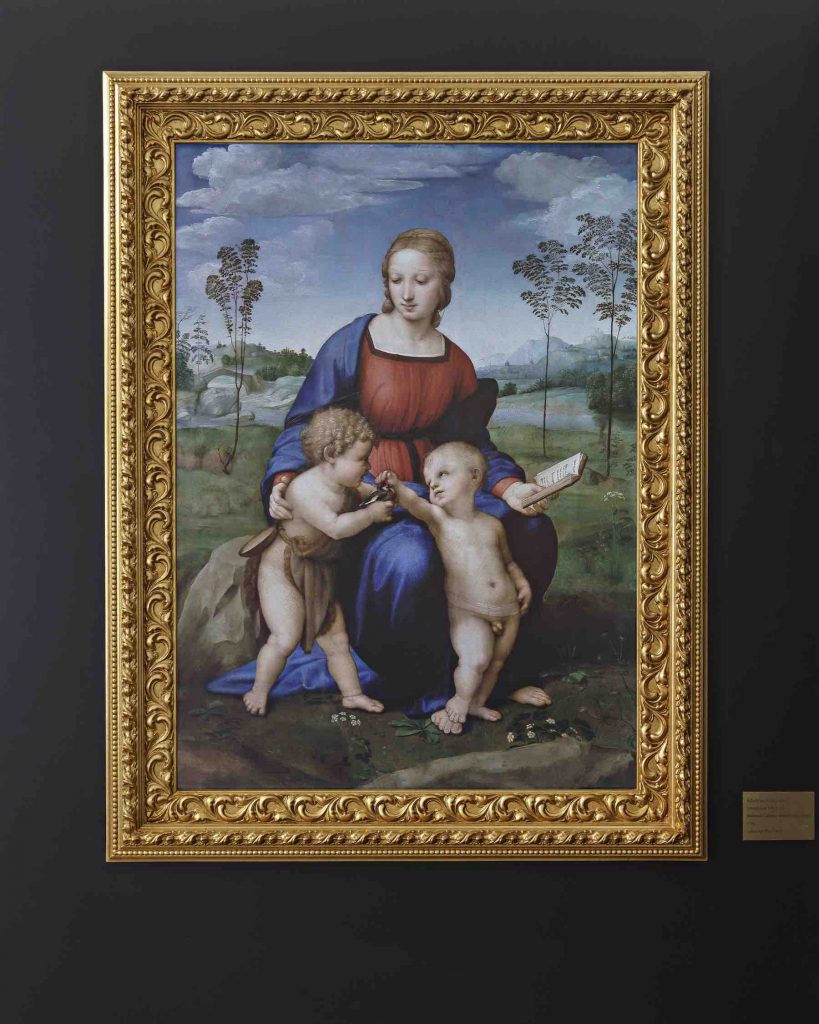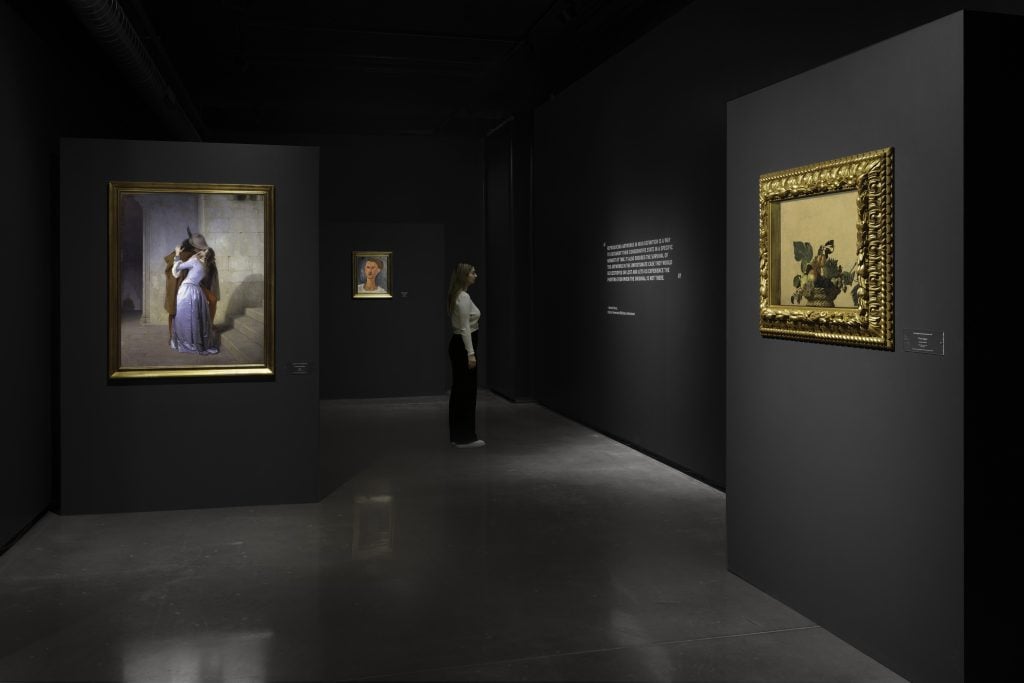Art History
Diego Velázquez’s ‘Venus’ Reimagined the Goddess of Love Like Never Before—Here Are Three Things You Might Not Know About It
Celebrate Valentine's Day with a closer look at a masterpiece that has entranced viewers for centuries.
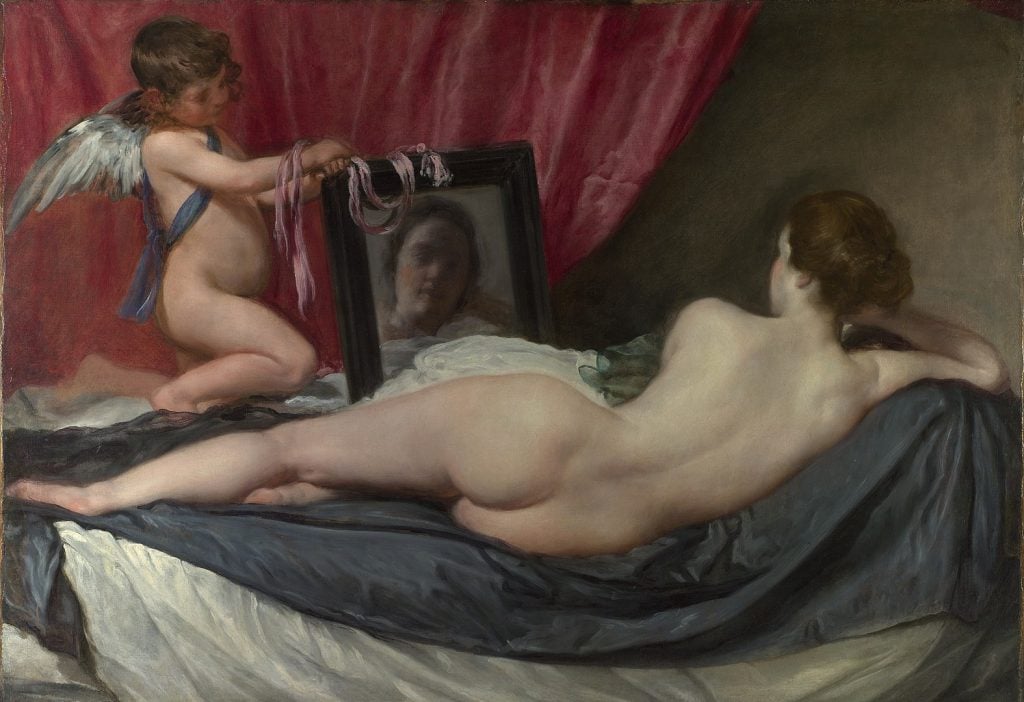
On March 10, 1914, a woman entered the National Gallery in London, strode up to Diego Velázquez’s Venus at her Toilet, (ca. 1647–51) and began hacking at the masterpiece with a meat cleaver. The woman was Mary Richardson, a suffragist who pronounced the attack an act of protest against the imprisonment of Emmeline Pankhurst, the famed women’s suffrage leader, who had been arrested the previous day. “I have tried to destroy the picture of the most beautiful woman in mythological history,” Richardson boldly asserted. By the time she was accosted, the famously sensual painting, which shows a recumbent nude Venus seen from behind, had been slashed seven times (it was ultimately successfully restored).
Colloquially known as the Rokeby Venus, the painting was considered by many to be the height of European beauty. The Spanish Golden Age masterpiece had come to England in 1813, when it was brought to hang in Rokeby Park, Yorkshire. Over the course of the century, it had become one of the most treasured paintings in England: when the canvas was sold from Rokeby Park in 1906, a public campaign raised an astonishing sum of £40,000 to purchase the painting for the National Gallery.
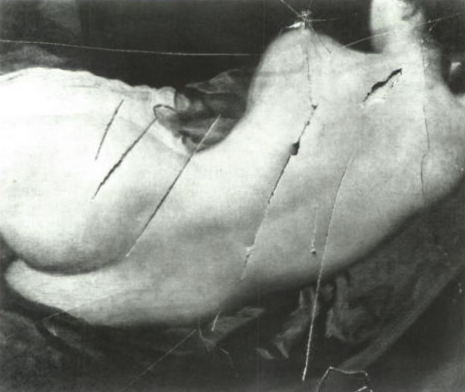
Photograph of the damage from the attack by Mary Richardson in 1914. The tears were subsequently restored.
For the famed subject of the painting, that was a bit ironic: The Toilet of Venus had been kept entirely out of public view for more than 150 years after its creation, seen only by a small circle of male elites. Famously, it is Diego Velázquez’s only surviving nude (others, known through records, have been lost); the painting was made during the Inquisition in Spain, when nudes were strictly (and punishably) forbidden. However, Spanish courtiers still collected these pictures avidly, largely from abroad—and Velázquez, as the court painter of King Philip IV, was afforded certain liberties.
It is believed that Velázquez completed his Venus on one of his visits to Italy, inspired by masterpieces of both the Renaissance and antiquity, including Giorgione’s Sleeping Venus (ca. 1510) and the ancient sculpture Sleeping Hermaphroditus (which was then in Rome), of which the artist commissioned a downscaled version and sent it back to Spain.
While it is unknown for whom, exactly, this Venus was painted, it was held in the collection of several Spanish nobles, including that of the famed libertine Gaspar Méndez de Haro, 7th Marquis of Carpio, who was notorious for two passions: women and art. The upheavals of the Napoleonic Wars ultimately brought the painting to England.
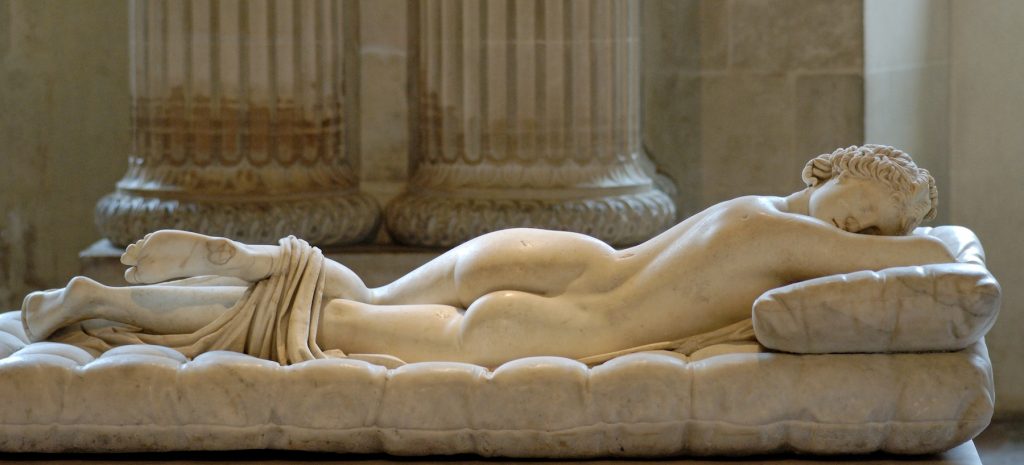
Sleeping Hermaphroditus, an ancient Roman copy of a Hellenistic original, excavated ca. 1608–20 and now in the Louvre.
Unknown in its era, The Toilet of Venus would prove profoundly influential to the likes of Édouard Manet and Pablo Picasso centuries later. Today the Rokeby Venus, as it is known, is one of the most iconic images of the Spanish Golden Age.
So much intrigue surrounding a painting can cloud our perception of it. This Valentine’s Day, we’ve taken a closer look at “the most beautiful woman in mythological history” and unearthed three fascinating details that just may make you see her in a whole new light.
Venus Stripped Bare (and Brunette, Too)
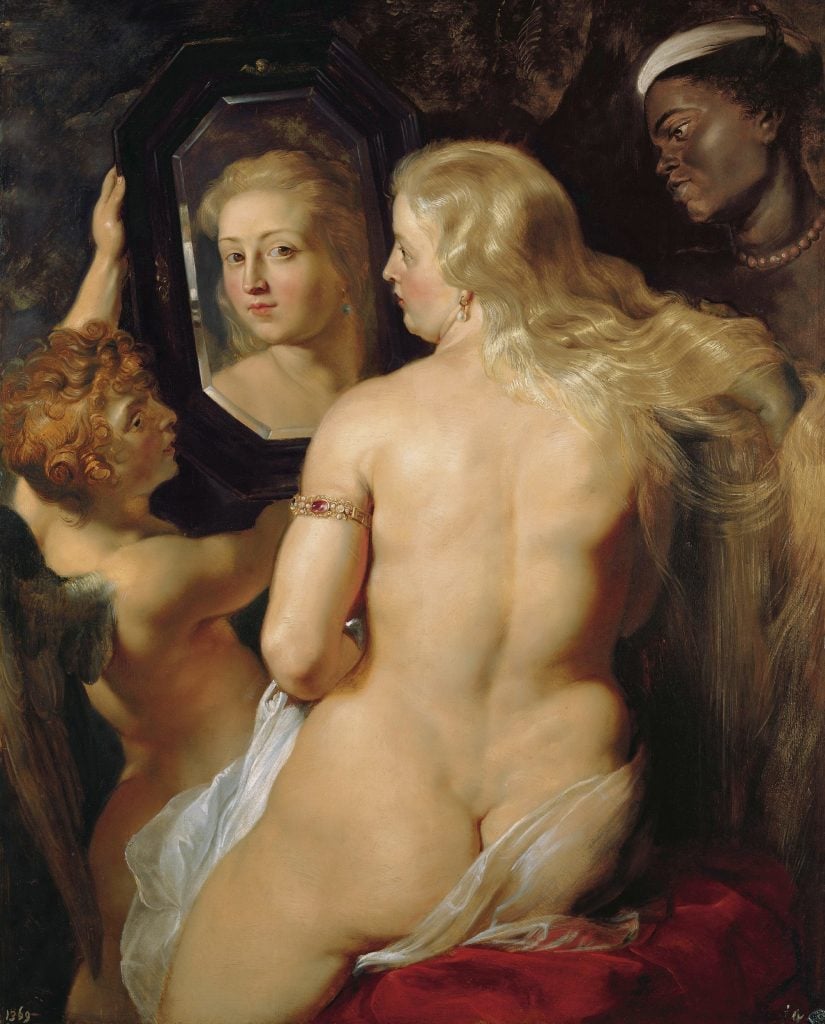
Peter Paul Rubens, Venus at a Mirror (ca. 1615).
In many senses, Velázquez’s Toilet of Venus turned convention on its head. The motif of the goddess caught mid primp had a long and storied history, with Titian, Veronese, and Peter Paul Rubens all making versions. The iconography for these scenes generally entails a nude Venus seated, looking at herself in a mirror, and adorning herself with jewels and ointments in a boudoir of great refinement. What’s more, she is almost always is blonde.
Velázquez’s approach is starkly modern, even austere. Firstly, his angle is highly unusual; he effectively combines two traditional compositional strategies for portraying Venus—the recumbent Venus and Venus looking at herself in the mirror. The depiction of Venus from behind was an erotic device in antiquity; the reference to the Sleeping Hermaphroditus Velázquez saw in Italy is apparent).
Velázquez’s Venus is a brunette, and the mythological paraphernalia associated with the goddess—jewelry, roses, and myrtle—are all absent. Rather than a room of great splendor, this Venus appears in an artist’s studio, with crimson drapes pinned against a bare wall and a black sheet (a decidedly Spanish touch), seeming to shadow the line of her silhouette atop a couch or mattress. Instead of the voluptuousness of, say, Rubens’s Venus, here we see a slender more contemporary woman (much has been speculated about the artist’s unknown model, with some believing her to be his mistress, since nude female models were prohibited).
Cupid, too, has been pulled into reality. He appears not as the jolly and mischievous god of myth, but as a little boy, his wings alone providing a tip-off that this is a scene from myth. In fact, in early inventories, the painting is described as mujer desnuda, or nude woman, rather than by its mythological subject matter.
Rather than jewels, where Velázquez lavishes care and detail is the body of Venus, which gleams like a pearl, the brushstrokes all but invisible. The composition is almost photographic in effect, with the body in focus and the rest of the scene blurred out. Everywhere else, Velázquez’s hand is loose, brushy, and suggestive—Cupid’s face is merely hinted at, as are the pink ribbons hanging on the mirror (perhaps meant to be the fetters with which Cupid bound lovers). This stripping-down of conventional elements had one intended effect: playing up the painting’s real-life eroticism.
Velázquez’s Trick Mirror
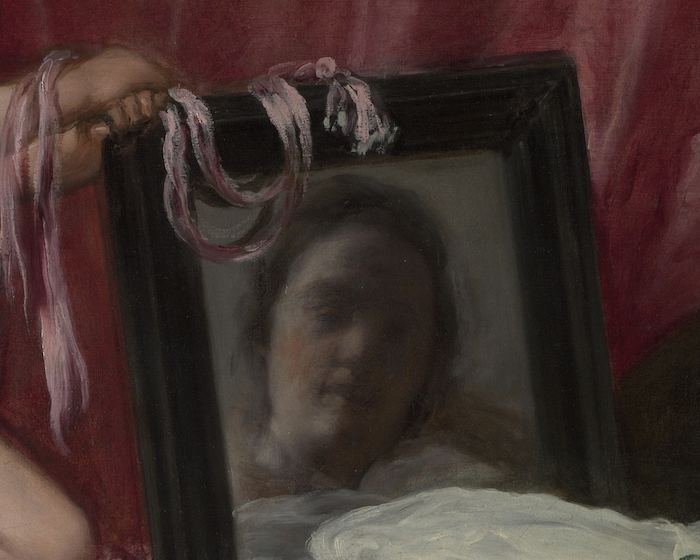
Detail of the Rokeby Venus (ca. 1647–51), by Diego Velázquez.
One of the pleasures of this painting is its ambiguity, a dance between revealing and concealing. Drawn first to Venus’s body, the eye wanders up toward the blush of pink on her cheekbone. We desire to see her face, and that wish seems to be granted as our eyes move to the rectangle of mirror, which holds her reflection. Except Velázquez withholds; he has blurred his Venus’s mirrored visage, offering only the suggestion of a woman’s face, and leaving the details of her likeness to our imaginations.
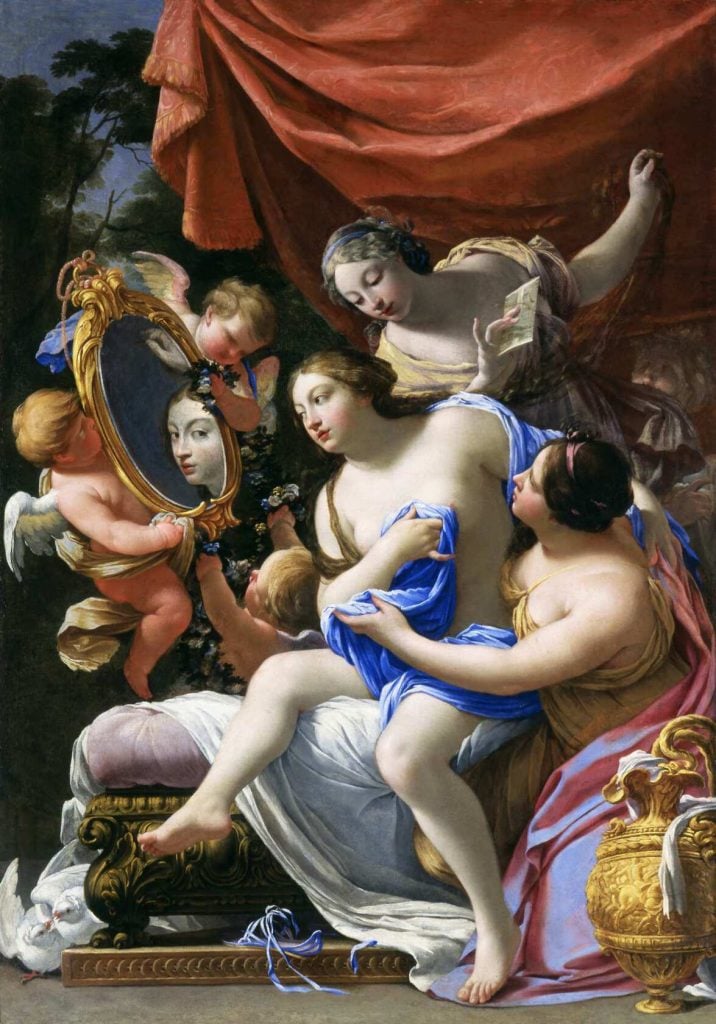
Simon Vouet, The Toilet of Venus (ca. 1640). Courtesy of Carnegie Museums of Pittsburgh.
Another look at that reflection reveals one more mirror trick. Venus appears to be looking at herself in the mirror, but simultaneously we perceive her to be looking directly at us, the viewers. The perspective is impossible and yet perceived coherently. This perceptual phenomenon is, in fact, known as the “Venus effect” for its prevalence in paintings of the goddess of love, and speaks to a psychological situation in which people hold beliefs that differ from observable reality.
It May Have Been Painted to Be a Pendant
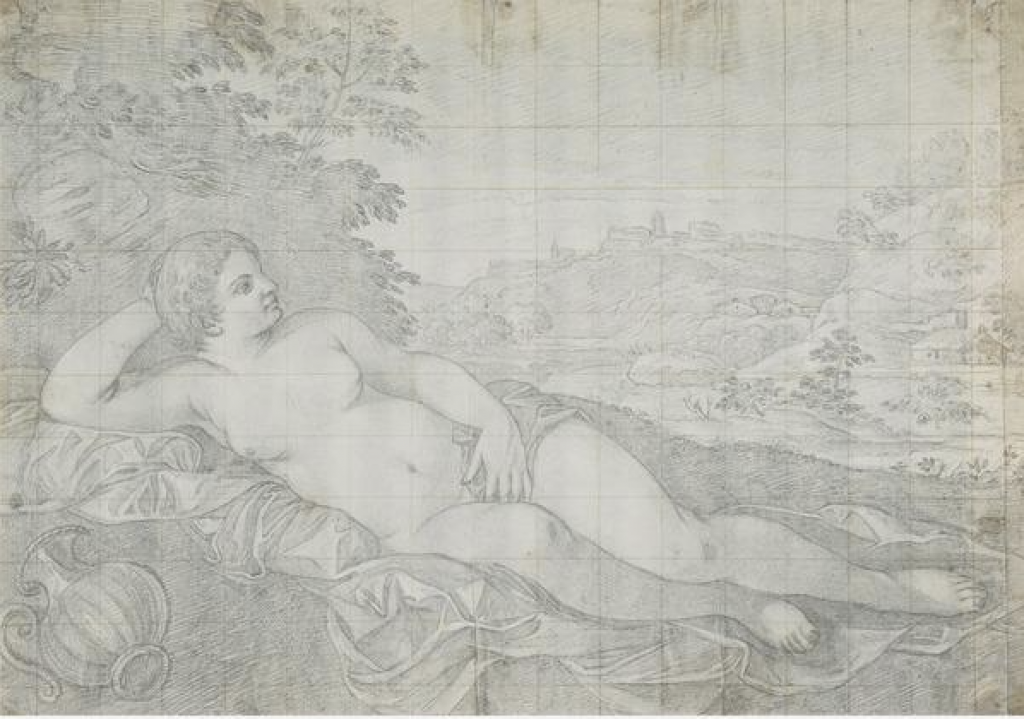
Richard Cooper, Venus Reclining in a Landscape. Copy of a Painting Formerly Attributed to Giovanni Antonio da Pordenone (undated). Collection of the National Galleries of Scotland.
What is most anomalous about the Rokeby Venus is her unusual positioning; she is both recumbent and turned away from the viewer. The compositional strategy creates a sculptural effect that seems to urge the viewer to walk around to see her other side.
Research sheds new light on this novel approach, with documents suggesting that Velázquez’s painting was intended as a pendant for a mysterious Venus of Pordenone—a recumbent Venus in a landscape that shows a nude female figure in the same pose as the Rokeby Venus, but from the front. William Buchanan, the art dealer who brought the painting to England in 1813, lists the work as a pendant. In the 1750s, Scottish artist Richard Cooper made an annotation on the back of his drawn copy of Velázquez’s Venus, saying “Venus and Cupid’. Velázquez. Large as life. In the collection of the Duke of Alva, Madrid. (Velázquez painted this as a companion to the Venus of Pordenone.)” Cooper had also made a pencil drawing of the Venus of Pordenone.
The trail of the Venus of Pordenone went cold after a 1925 sale, but the painting seems to have been rediscovered by English dealer Alex Wengraf in 1994, according to scholars Enriqueta Harris and Duncan Bull (Wengraf appeared with the painting on the television program “The Private Life of a Masterpiece: The Rokeby Venus by Diego Velazquez“; see minute 23:00.).
“[N]ot only is the motif of a reclining nude resting her head against her right hand in itself unusual for this type of full-length subject, but the contours of the two bodies, the disposition of their legs, the angles at which their feet are placed, and the way in which both tuck their right heels beneath their left calves, all suggest that one of the pictures was painted with direct knowledge of the other,” write Bull and Harris in the essay “The Companion of Velázquez’s Rokeby Venus and a Source for Goya’s Naked Maja.”
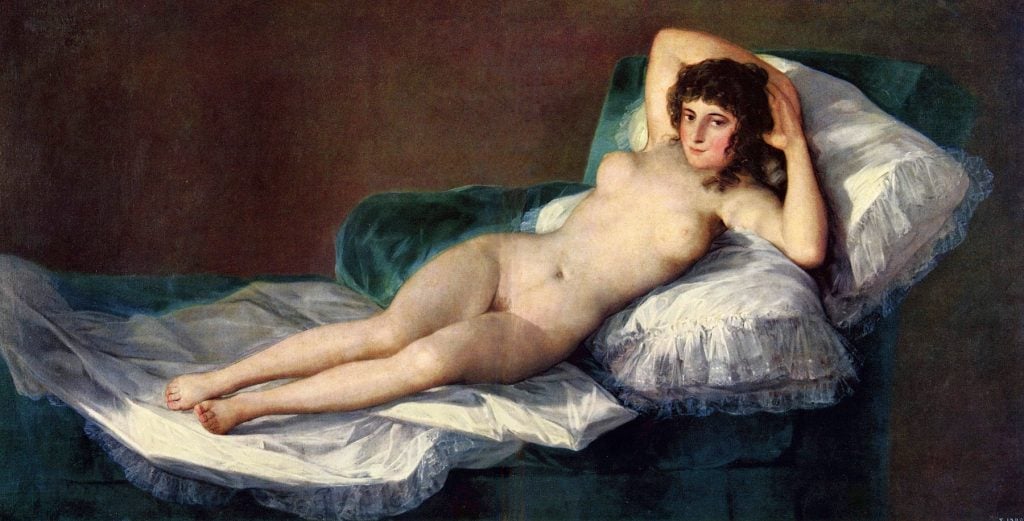
Francisco Goya, The Naked Maja (ca. 1797–1800). Collection of the Museo Nacional del Prado.
Whether or not Velázquez painted The Toilet of Venus in response to Venus of Pordenone, what is substantiated by records is that the paintings were both in the collection of Gaspar Méndez de Haro and were displayed side by side for many years. The pair were then sold together, entering the collection of the Duke and Duchess of Alba, and later that of Manuel de Godoy, who hung the two paintings alongside Francisco Goya’s infamous duo The Naked Maja and The Clothed Maja, likely commissioned by Godoy—and which themselves may have been partially inspired by the Venus of Pordenone.
Follow Artnet News on Facebook:
Want to stay ahead of the art world? Subscribe to our newsletter to get the breaking news, eye-opening interviews, and incisive critical takes that drive the conversation forward.

It looks like you're using an ad blocker, which may make our news articles disappear from your browser.
artnet News relies on advertising revenue, so please disable your ad blocker or whitelist our site.
To do so, simply click the Ad Block icon, usually located on the upper-right corner of your browser. Follow the prompts from there.
SHARE

